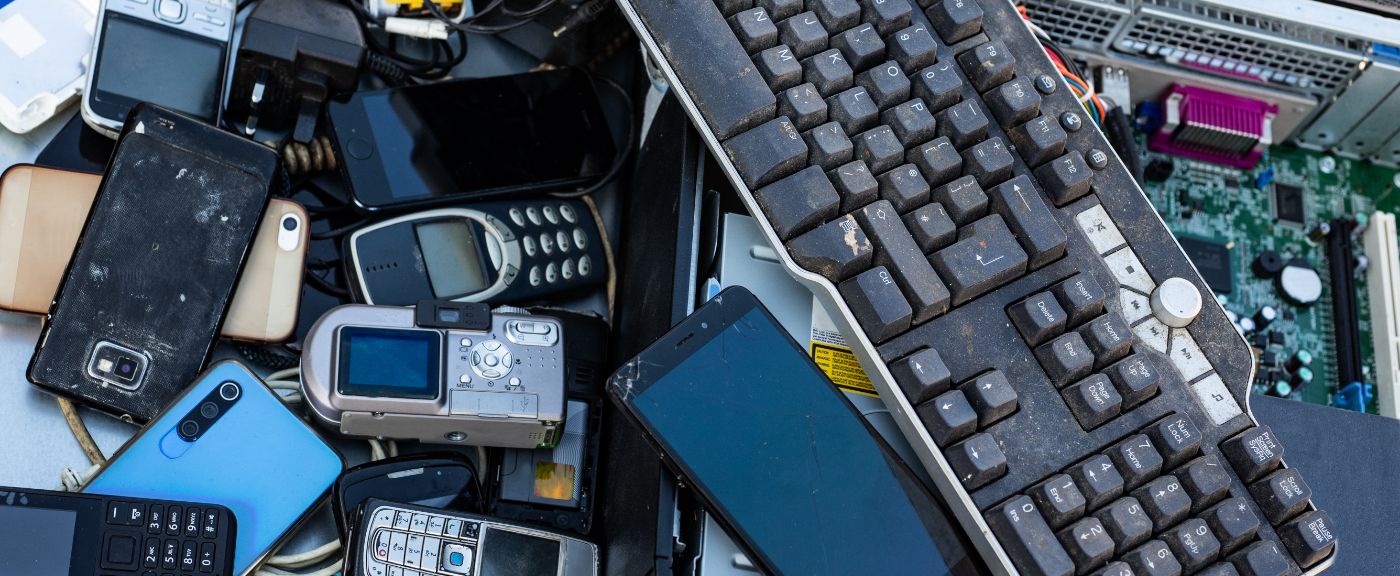Elevate Your E-Waste Administration With R2 Certification: a Comprehensive Review
One secret approach to elevate e-waste administration techniques is by attaining R2 accreditation. By discovering the processes and advantages linked with R2 certification, a deeper understanding of exactly how it can change e-waste management techniques arises, losing light on a path towards sustainability and honest disposal methods.
Relevance of E-Waste Management

When e-waste is not handled appropriately, these harmful materials can permeate right into the ecological community, causing damage to wild animals and potentially entering the food cycle, posing dangers to human health. The improper disposal of e-waste contributes to air pollution and greenhouse gas emissions, intensifying environment adjustment and environmental deterioration.

Advantages of R2 Accreditation

To start with, R2 certification improves reliability by showcasing a company's dedication to sustainable methods. It assures consumers, partners, and stakeholders that the business sticks to strict requirements for e-waste monitoring - r2 certification. This trustworthiness can bring about enhanced trust and boosted relationships with clients that focus on environmental obligation
Second of all, R2 qualification helps reduce threats connected with incorrect e-waste disposal. By complying with the rigorous standards set forth by the accreditation, companies can decrease the likelihood of data violations, ecological contamination, and lawful effects. This proactive approach safeguards the business's track record and decreases prospective obligations.
Last but not least, R2 qualification shows a dedication to ecological stewardship - r2 certification. By responsibly managing electronic waste through certified processes, companies add to the preservation of resources, reduction of contamination, and promotion of a circular economic climate. This commitment not just profits the setting yet additionally lines up with advancing customer assumptions for lasting service techniques
R2 Certification Process Summary
Having developed the advantages of R2 qualification in advertising integrity, danger mitigation, and ecological stewardship, it is important to currently lay out the thorough process involved in obtaining this qualification. The R2 qualification process begins with a thorough testimonial of the company's operational plans best site and treatments to guarantee compliance with the R2 criterion. This preliminary assessment is crucial in recognizing browse this site any type of gaps that require to be dealt with before continuing even more.
As soon as the organization's techniques line up with the R2 conventional requirements, an independent third-party auditor performs an on-site audit to assess the execution and efficiency of these practices. This audit consists of a comprehensive evaluation of documentation, meetings with staff, and physical examinations of facilities to validate compliance.
Adhering to a successful audit, the company receives an accreditation decision based upon the auditor's searchings for. If authorized, the company is given R2 qualification, demonstrating its commitment to liable e-waste management. It is necessary to note that preserving R2 qualification requires recurring conformity with the standard's demands and routine audits to guarantee continued adherence to best techniques in e-waste recycling and disposal.
Key Requirements for R2 Conformity
An essential element of attaining R2 conformity is ensuring that all electronic waste (e-waste) processing facilities satisfy stringent environmental and safety and security standards. To abide by R2 demands, companies have to follow crucial standards that concentrate on responsible e-waste management methods. These requirements consist of applying a recorded ecological, wellness, and safety management system, guaranteeing the safe handling of data-containing tools, and performing thorough downstream due diligence to track the final destination of e-waste products.
Furthermore, R2 compliance necessitates the proper testing, refurbishment, and recycling of electronic equipment to expand its valuable life and minimize ecological impact. Facilities seeking R2 certification must also focus on employee health and wellness and security by supplying required training, personal protective tools, and a secure workplace. Additionally, maintaining detailed documents of e-waste handling activities and routinely going through audits by approved licensing bodies are crucial components of showing recurring compliance with R2 standards.
Influences of Sustainable E-Waste Practices
The execution of lasting e-waste methods in accordance with R2 conformity not only ensures ecological and security standards are fulfilled however likewise considerably impacts the general lifecycle of electronic items. By adhering to R2 criteria, electronic waste monitoring processes become extra reliable, decreasing the environmental footprint of digital products. Lasting e-waste practices promote the appropriate disposal of digital elements, making certain that dangerous products are dealt with sensibly and do not wind up contaminating the environment.
Additionally, sustainable e-waste practices can contribute to task development in the recycling and repair fields, cultivating financial check this development while advertising ecological duty. On the whole, the fostering of lasting e-waste techniques under R2 qualification offers as a critical action in the direction of attaining an extra eco lasting electronics market.
Conclusion
To conclude, executing proper e-waste management practices is crucial for ecological sustainability and source preservation. R2 accreditation plays an essential role in ensuring liable handling and disposal of digital waste. By adhering to the strict criteria stated by R2 requirements, organizations can not only decrease their ecological effect but additionally add to a more lasting future for generations to find.
One key method to boost e-waste monitoring techniques is by achieving R2 certification. By discovering the benefits and processes linked with R2 accreditation, a deeper understanding of just how it can transform e-waste management techniques arises, shedding light on a course towards sustainability and moral disposal methods.
The R2 certification procedure begins with a detailed evaluation of the company's operational plans and procedures to make certain compliance with the R2 criterion. If approved, the company is granted R2 qualification, demonstrating its dedication to liable e-waste administration. On the whole, the adoption of lasting e-waste practices under R2 accreditation offers as an important action towards accomplishing an extra environmentally lasting electronic devices industry.